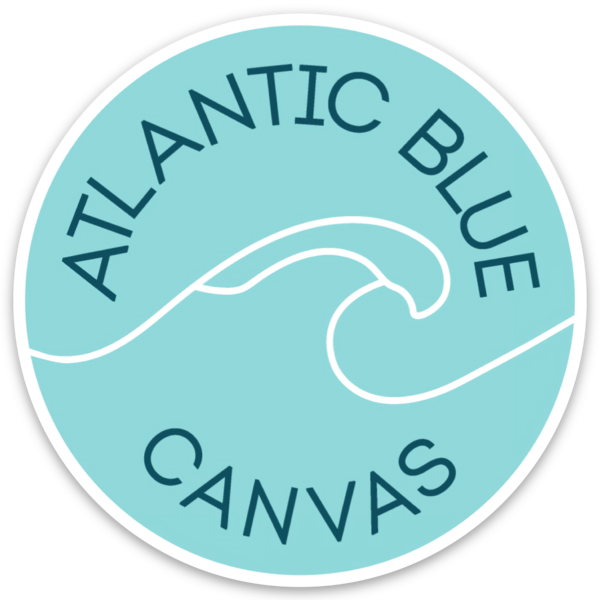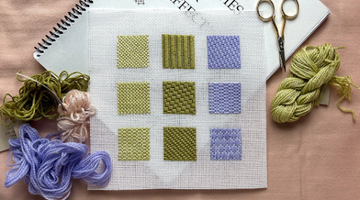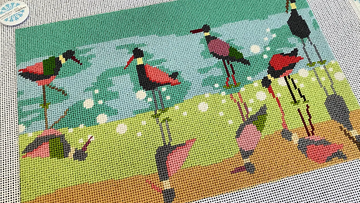Once you've mastered the basic needle point stitch techniques, you're ready to level up your skills with advanced needlepoint stitches. These stitches add texture, depth, and uniqueness to your work, allowing you to create creative needlepoint patterns that stand out. Whether you're looking to add decorative flair, fill complex areas, or bring a piece to life with dimension, advanced stitches offer endless possibilities.
Before diving in, we recommend reviewing our Beginner’s Step-by-Step Guide to ensure you have a strong foundation in basic stitches. Also, check out our post on 7 Popular Needlepoint Stitches, which acts as a perfect bridge between beginner and intermediate levels.
Key Takeaways
- Advanced needlepoint stitches provide texture, dimension, and artistry to your canvas.
- Decorative needlepoint stitches like Bargello and Rhodes enhance creativity and detail.
- Complex needlepoint stitches are perfect for large areas, creating rhythm and flow.
- Dimensional needlepoint stitches add unique tactile effects, ideal for artistic flair.
-
Practicing needle point stitch techniques improves skill and opens creative possibilities.
Decorative Stitches for Texture
Decorative needlepoint stitches are ideal for adding visual interest and tactile elements to your designs. These stitches stand out on the canvas and are often used in borders, patterns, or focal points of your needlepoint project. Here are some popular decorative stitches to explore:
1. Bargello Stitch
The Bargello Stitch is known for its flowing, wave-like appearance. It's composed of straight stitches that repeat in a pattern to create flame, zigzag, or stepped designs. This decorative needlepoint stitch is especially eye-catching when done with bold color gradients.
2. Scotch Stitch
The Scotch Stitch is a square or rectangular stitch made up of smaller diagonal stitches. It creates a textured block that adds weight and visual interest. It’s often used in backgrounds or patterned motifs in creative needlepoint patterns.
3. Rhodes Stitch
The Rhodes Stitch is a circular or square pattern where stitches cross over a central point. It creates a raised, almost beaded effect on your canvas. This unique needlepoint stitch is perfect for accents, buttons, or round floral shapes.
4. Complex Filling Stitches
When you need to fill large areas with something more interesting than the basic tent stitch, complex needlepoint stitches are the way to go. These needlepoint filling stitches not only cover space but also enhance the overall design through texture and direction.
5. Hungarian Stitch
This stitch consists of longer straight stitches combined with shorter diagonal ones. It creates a chevron pattern with a subtle woven texture. Use this in backgrounds or large shapes where a diagonal movement adds flow.
6. Parisian Stitch
Parisian Stitch combines long and short horizontal stitches in an alternating pattern. This complex needlepoint stitch adds rhythm and structure to your canvas and works well for architectural elements or decorative panels.
7. Mosaic Stitch
Made up of a group of three stitches—two short, one long—the Mosaic Stitch is a variation on the tent stitch that creates a tiled effect. This needlepoint filling stitch is ideal for geometric and abstract patterns.
8. Specialty & Dimensional Stitches
If you want to add realism, pop, or tactile interest to your design, dimensional needlepoint stitches are your best friends. These unique needlepoint stitches rise off the canvas to create eye-catching effects.
9. French Knot
Though covered in beginner guides, the French Knot can be elevated in advanced designs. Using multiple wraps or varying thread thickness creates intricate textures. They are a staple in dimensional needlepoint stitches for floral work and accents.
10. Jessicas
A Jessica Stitch involves weaving thread around a circular path in and out of canvas holes. This specialty stitch creates an open, lacy look often used in modern and creative needlepoint patterns. Great for mandala or eye motifs.
11. Eyelets
The Eyelet Stitch creates an actual hole in the fabric surrounded by thread. It offers texture and transparency, often used in lace-like borders or to mimic buttons and holes in clothing designs.
Tips for Practicing Advanced Stitches
Practicing advanced needlepoint stitches takes time and patience. Here are some tips to help you succeed:
- Use practice canvases to get familiar with each stitch.
- Start with small sampler projects before moving onto complex designs.
- Choose high-quality materials to improve the look and feel of your stitches.
- Follow diagrams closely and don’t rush your progress.
Conclusion: Unlock Creative Needlepoint Patterns
Exploring advanced needlepoint stitches allows you to break free from the basics and explore more complex and visually dynamic techniques. Whether you’re layering dimensional needlepoint stitches or adding intricate fills, the skills you build at this stage open the door to unlimited design creativity.
Make sure to read our blog on Basket weave stitch, the most popular stitch for professional finish.
Also, check out our guide on 7 Popular Needlepoint Stitches for mid-level projects that transition smoothly into advanced work.
With patience and practice, these unique needlepoint stitches will soon become essential tools in your artistic toolkit.
Also Read: Needlepoint Stitches: The Complete Beginner-to-Expert Guide
Frequently Asked Questions (FAQs)
Q: What is the difference between basic and advanced needlepoint stitches?
A: Basic stitches focus on coverage and foundation, while advanced needlepoint stitches offer texture, complexity, and artistic depth.
Q: Are decorative needlepoint stitches hard to learn?
A: They take practice but are approachable with diagrams, guides, and starter kits.
Q: Where can I use complex needlepoint stitches in a project?
A: They're best suited for backgrounds, motifs, and areas where visual rhythm enhances design.
Q: Do I need special materials for dimensional needlepoint stitches?
A: A larger mesh canvas and varied threads help emphasize dimensional effects.
Q: How can I create unique needlepoint stitches?
A: By combining different stitch types and experimenting with threads, textures, and angles.
Conclusion
Advanced needlepoint stitches are essential for stitchers looking to go beyond the basics. Using complex needlepoint stitches allows for greater creative expression, especially when working on detailed canvases. Decorative needlepoint stitches like the Rhodes or Bargello stitch make excellent additions to borders, frames, and accents. When you want to enhance a flat area, dimensional needlepoint stitches such as French Knots or Eyelets are the perfect solution. If you're looking for inspiration, creative needlepoint patterns often feature a combination of needlepoint filling stitches, decorative styles, and unique needlepoint stitches to achieve layered results. Remember, mastering the advanced needle point stitch is a journey worth taking—every stitch brings your canvas to life.
Planning a project for the holidays? Learn how to make a needlepoint stocking this season.





